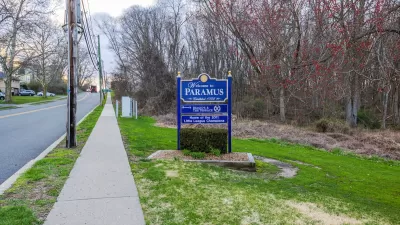The city’s comprehensive, neighborhood-focused housing strategy focuses on identifying properties and land that can be repurposed for housing and encouraging development in underserved neighborhoods.

New research from the Harvard Kennedy School’s Data-Smart City Solutions project analyzed how the city of Atlanta uses a neighborhood-based approach and data to improve its housing services and preserve affordable housing in the city.
As Jabari Simama explains in a piece for Governing, “Harvard identified four key components of Atlanta’s approach: collaboration across sectors, identifying developable properties, strengthening governance and planning for the future.”
According to the Atlanta mayor’s chief policy officer, Courtney English, the city’s approach to housing focuses on “neighborhood health” in some of the city’s most distressed neighborhoods. A group called the Affordable Housing Strike Force, which includes leaders from the housing authority, a land bank, the school district, the city’s transportation department, and nonprofits, was created to coordinate efforts. “The strike force identified approximately 2,000 undeveloped acres that could be repurposed for housing, categorizing the properties on factors such as development readiness, remediation needs and proximity to transit.”
In three years, the city built 7,000 new housing units and has 4,000 more in the pipeline. The city is also acquiring office buildings to convert to housing and is creatively using city-owned properties to add housing. “When asked what he would say to public officials who believe this model wouldn’t work in their cities, English pointed to the long-term cost of inequity — that economic stability depends on building and maintaining a strong middle class and preventing widespread poverty and violence that drive residents out of a city.”
FULL STORY: Atlanta's Housing Approach Offers a Model for Other Cities

Study: Maui’s Plan to Convert Vacation Rentals to Long-Term Housing Could Cause Nearly $1 Billion Economic Loss
The plan would reduce visitor accommodation by 25,% resulting in 1,900 jobs lost.

North Texas Transit Leaders Tout Benefits of TOD for Growing Region
At a summit focused on transit-oriented development, policymakers discussed how North Texas’ expanded light rail system can serve as a tool for economic growth.

Why Should We Subsidize Public Transportation?
Many public transit agencies face financial stress due to rising costs, declining fare revenue, and declining subsidies. Transit advocates must provide a strong business case for increasing public transit funding.

How to Make US Trains Faster
Changes to boarding platforms and a switch to electric trains could improve U.S. passenger rail service without the added cost of high-speed rail.

Columbia’s Revitalized ‘Loop’ Is a Hub for Local Entrepreneurs
A focus on small businesses is helping a commercial corridor in Columbia, Missouri thrive.

Invasive Insect Threatens Minnesota’s Ash Forests
The Emerald Ash Borer is a rapidly spreading invasive pest threatening Minnesota’s ash trees, and homeowners are encouraged to plant diverse replacement species, avoid moving ash firewood, and monitor for signs of infestation.
Urban Design for Planners 1: Software Tools
This six-course series explores essential urban design concepts using open source software and equips planners with the tools they need to participate fully in the urban design process.
Planning for Universal Design
Learn the tools for implementing Universal Design in planning regulations.
City of Santa Clarita
Ascent Environmental
Institute for Housing and Urban Development Studies (IHS)
City of Grandview
Harvard GSD Executive Education
Toledo-Lucas County Plan Commissions
Salt Lake City
NYU Wagner Graduate School of Public Service





























